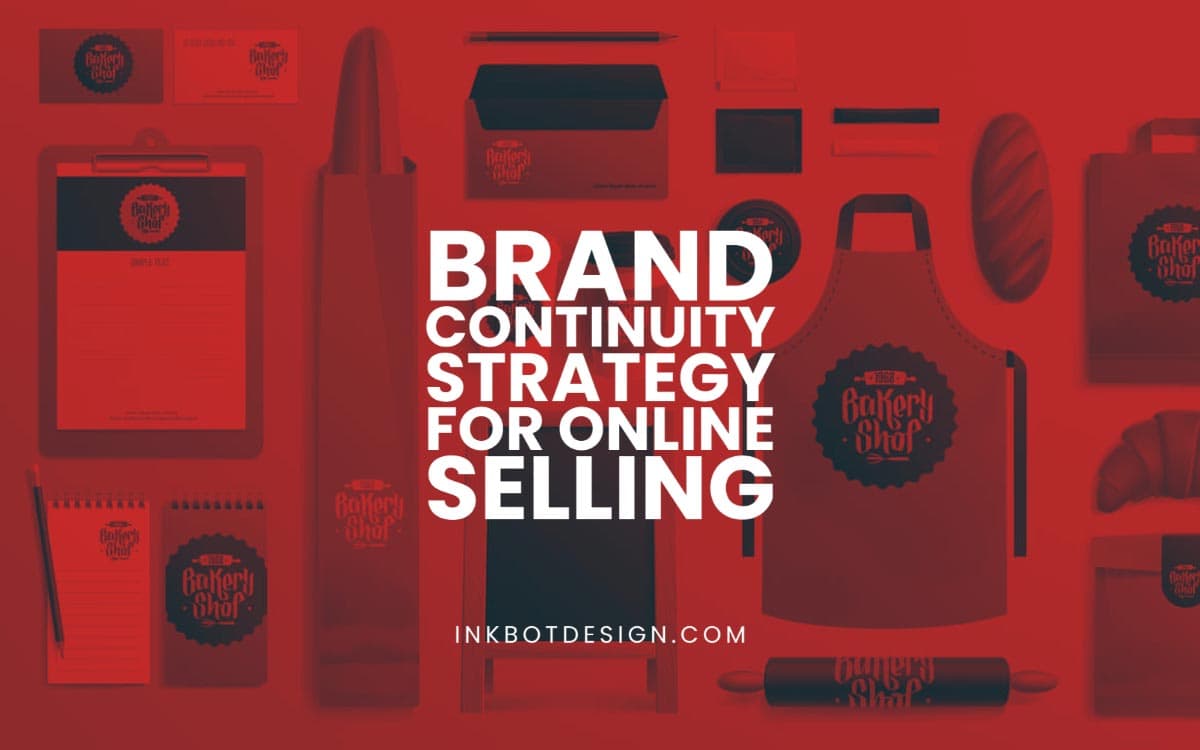
16 Mar Brand Continuity Strategy For Online Selling
Brand Continuity Strategy For Online Selling
Amid constant change, human beings are wired to find comfort in the things that offer them reliability, safety, consistency, and trust.
The people that we choose to befriend, the partners that we choose to share our lives with, share those characteristics.
From the moment that they begin to display behaviors that aren’t congruent with their personality, is when the cracks in a relationship start to emerge.
A company is no different in the minds of consumers.
Although it isn’t a living, breathing entity, it surely is made of humans.
And we seek the SAME things from a company — Continuity of their Identity.
Now, what do these terms mean?

When you land yourself in a situation in which only external perception matters, how you see yourself is irrelevant.
Your job as a company is to clearly communicate who you think you are to the people that you want to be selling to.
And when you do this relentlessly over some time via any marketing channel, you build a brand that’s familiar and continuous in the consumers’ minds.
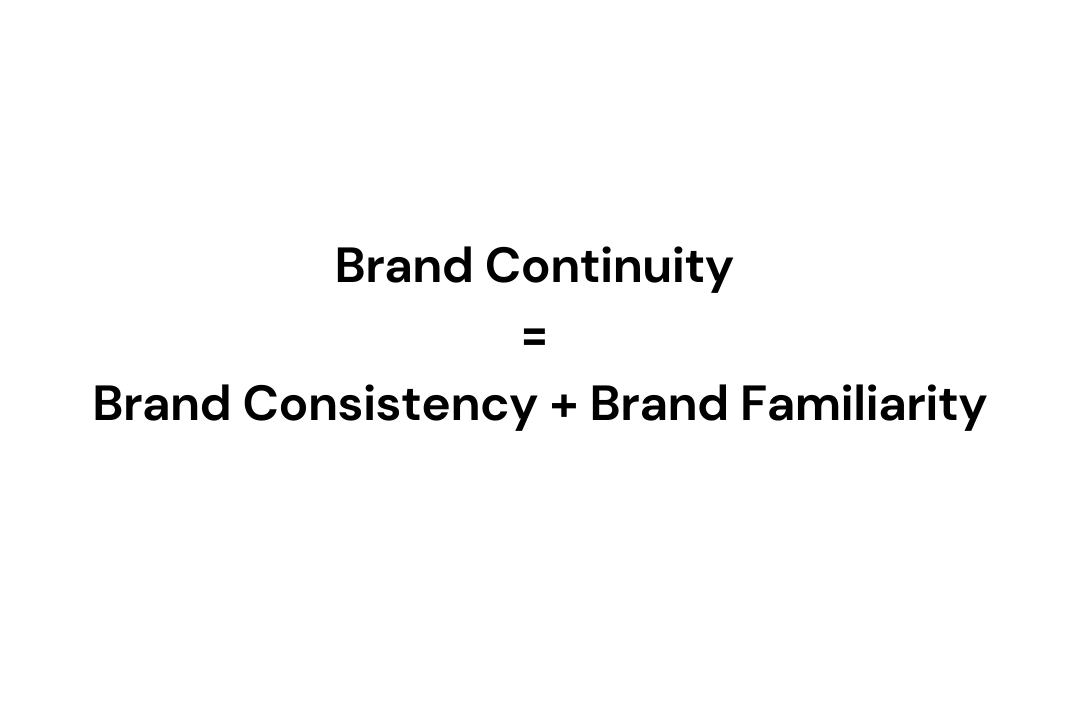
Yes, you need to be consistent with your marketing efforts, to imprint your brand’s ideology deep into the perceiving brains of the consumers.
From using the same font family, color palettes in your logo, and website to utilizing the same tonality on your blog and social media posts to employing the same style of handling customer inquiries on the phone and emails make a brand continuous.
However you choose to step into the market, every effort must be anchored to your core message and values, so that it’s instantly recognizable regardless of what the observation medium is.
This is also called Unified Branding Approach.
Why is Brand Continuity Important?
The only reason a business can exist online is if it generates revenue, right?
To achieve this, consistent sales must happen.
To sell consistently, consumers must be able to trust a brand, so that they can buy again and again.
To breed familiarity, they must identify WHO YOU ARE and WHY YOU EXIST.
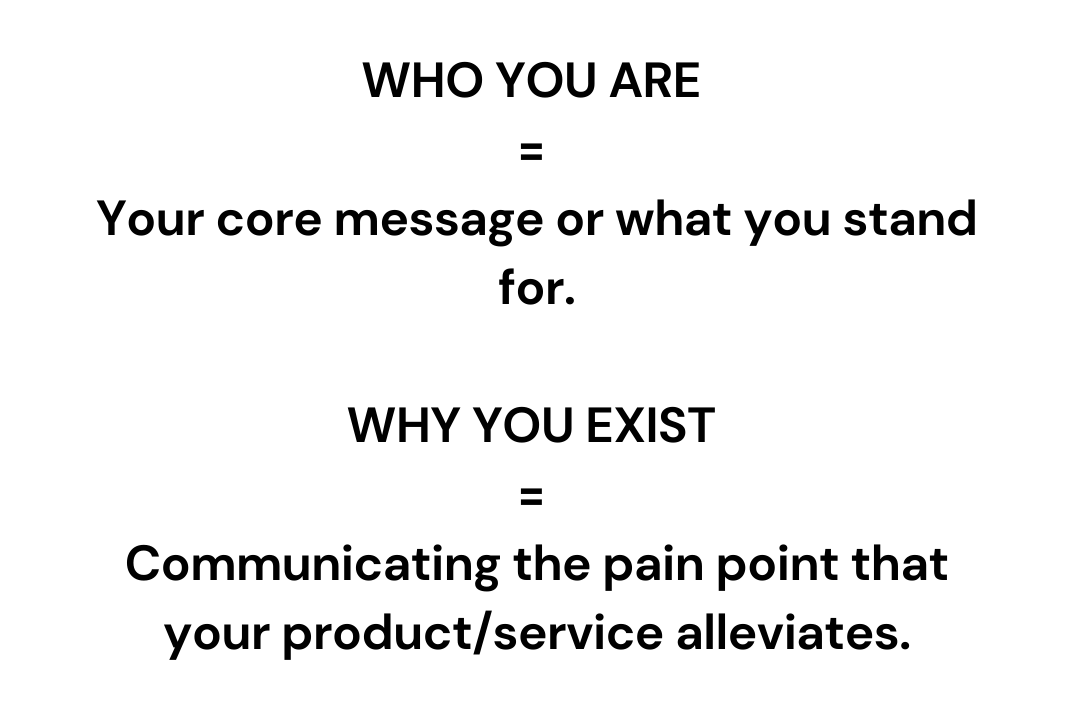
Let’s look at an example to get a hold of the importance of brand continuity:
When you think of Apple, either Steve Jobs or its logo pops in your mind.
That’s by no accident!
The logo pops up only because Apple has put that on every product of theirs in a bold fashion.
When you think of buying an Apple gadget, there is no doubt in your mind that you’ll receive the same buying experience whether you shop at its London or Bromley store.
WHY? Brand Continuity — that’s why!
Apple has put enormous efforts into making sure that every store looks almost identical, and that its staff, at all its stores, is trained via strict guidelines.
Marketing is about making people perceive what you want them to perceive, and controlling how they perceive you.
But what would happen if your brand isn’t continuous?
Then every moving part of your business will work independently and provide unalike experiences at every customer touchpoint.
That would sharply lower brand trust leading to a catastrophic scenario of downfall in sales.
Brand Continuity glues reliability to your brand while expanding your market visibility, which in turn helps you render your competitors irrelevant in the eyes of the consumer.
And that is the sweetest brand domination — when the consumers think of your company as the ONLY option, period.
Best ways to Maintain Brand Continuity
Identify The Need Of Your Existence
Don’t make the mistake of trying to please everyone.
When you do that, you end up serving no one and spreading thin to the point of irrelevance.
Niche down, and decide to serve only one kind of customer with specific pain points.
Build your products around solutions to those problems.
Having a target group builds a customer persona and brings absolute clarity about why you even exist in the market.

[Source]
SpaceX exists to make humans a multi-planetary species, and each of its products takes it (and us) one step closer to that goal.
Elon Musk has vehemently stuck to the goal that was set in 2002.
That’s why the company continues to exist to this day!
Defining your existence helps your prospects spot you amidst the noise of companies trying to be everything for everyone.
Communicate Your Message
Once you have zeroed in on your mission, it’s time to communicate your core values and principles to the prospects.
Why – you ask?
It’s so that you bridge the gap between your message and its perception.
Valuable communication is said to have occurred when the degree of misunderstanding between the speaker and listener is 0.
If there is any discrepancy, your brand risks being misunderstood in an environment that’s never been so volatile.

[Source]
These two guys set out to simplify the video editing process with their tool, VEED.
In under 2 years, VEED has managed to become the go-to platform for any content creator or brand looking to edit and publish video content, right from their browsers.
They managed to do so by communicating their mission and being consistent with it:
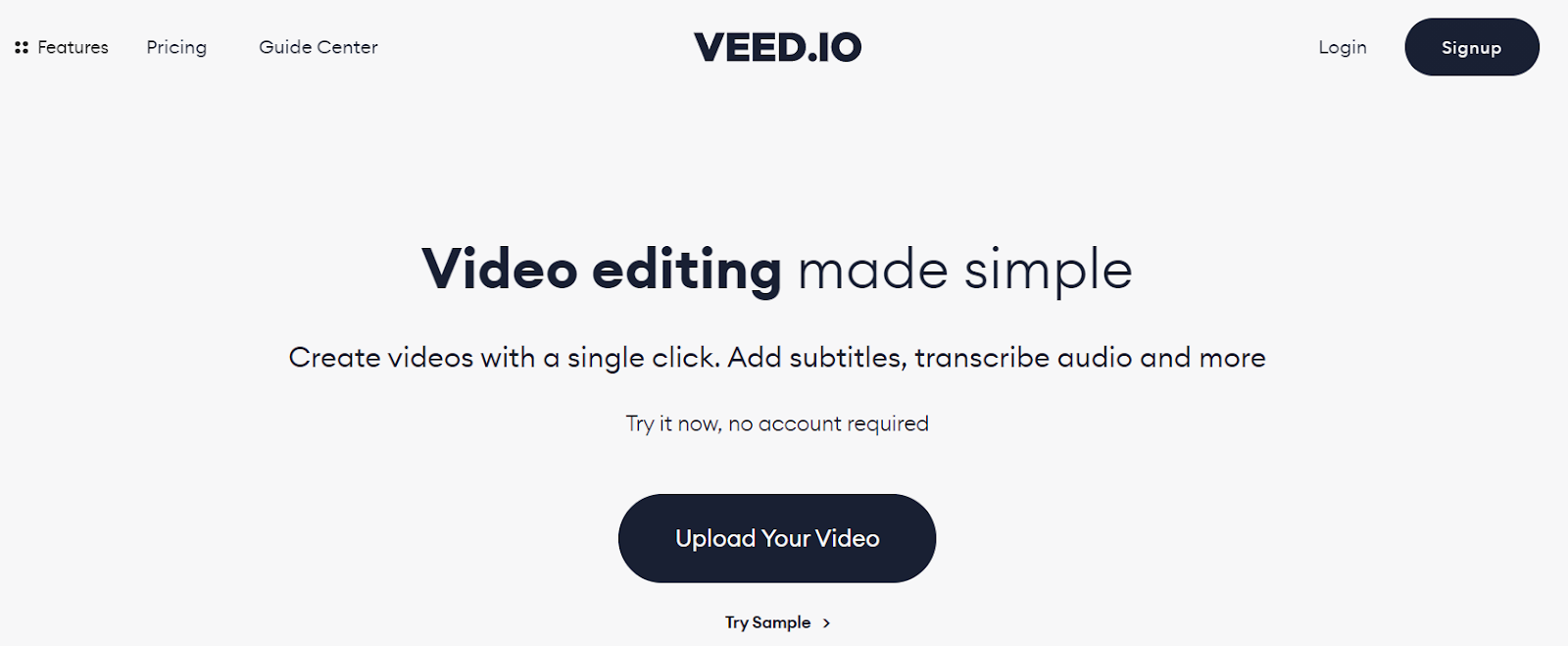
[Source]
Bold and clear message definition leaves (almost) no doubts in the mind of their prospects when they land on their website.
Build Brand Guidelines On Top Of Constraints
Jack Butcher, the founder and CEO of VisualizeValue states:
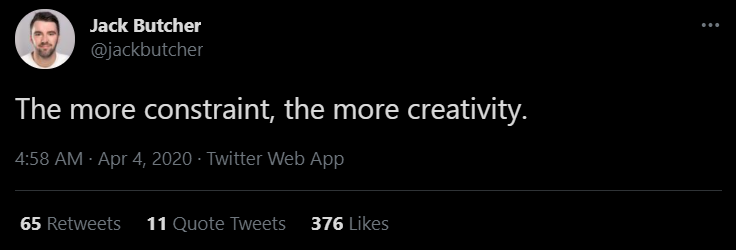
[Source]
VisualizeValue is a project to visualize core ideas. Jack built a $1Mn+ business in just 18 months by pursuing the project relentlessly.
He simplified his design process by capitalizing on constraints: Black Background, White Illustrations, Carbon Font in Figma:
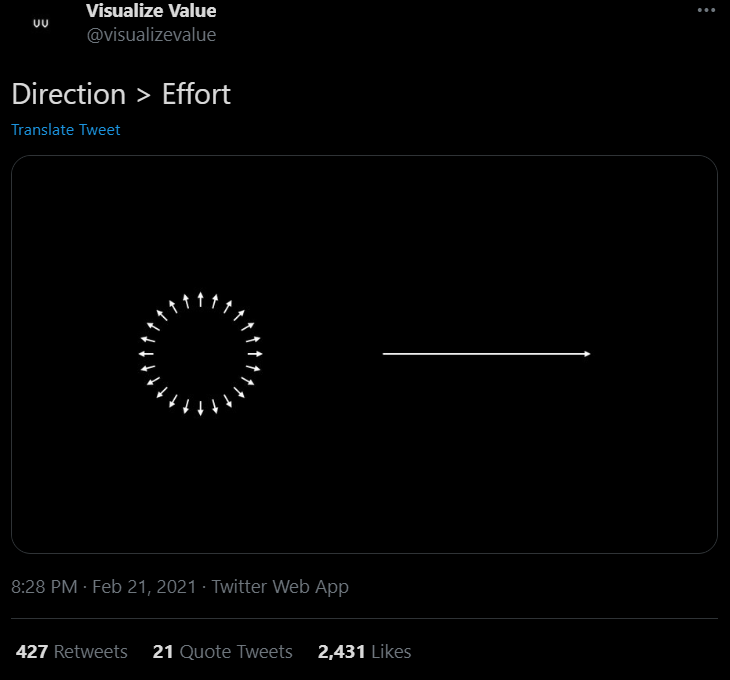
[Source]
That sped up his publishing frequency — from 3 or 4 a day to at least 1 a day.
Visualize Value has built a cult following around its philosophy and this can be credited to its clarity on its goals and calculated efforts to realize them.
The more constrained your environment is, the more deeply you dig into your expertise.
And when there is a consistency that followers can spot, they begin to trust you and minimal efforts need to be put in to generate big revenues.
When you build your brand guidelines on top of constraints, it helps you design marketing templates that enable you to get out of the process and let an employee take care of communicating your brand message consistently with no interruptions.
Find and Establish Your Brand Baritone
How you choose to interact with the world, defines your brand.
If it’s brash, people will see you as bold.
If you speak less, people will perceive you as quiet and rational.
If you speak more, people will have an opinion that you’re an extrovert.
Your personality is observed and judged with every word you communicate, regardless of the chosen medium.
It is important to note that your brand voice MUST correspond to your niche.
If it’s B2B, it’s better to keep it formal, for the most part.
If it’s B2C, it’s best to be conversational with your audience.
Your content and audience engagement should reflect your brand personality.
There shouldn’t be a disconnect between the two!
Tinder is known to have a fun and engaging brand voice.
It publishes memes daily and converses with its audience as if it’s one of them.
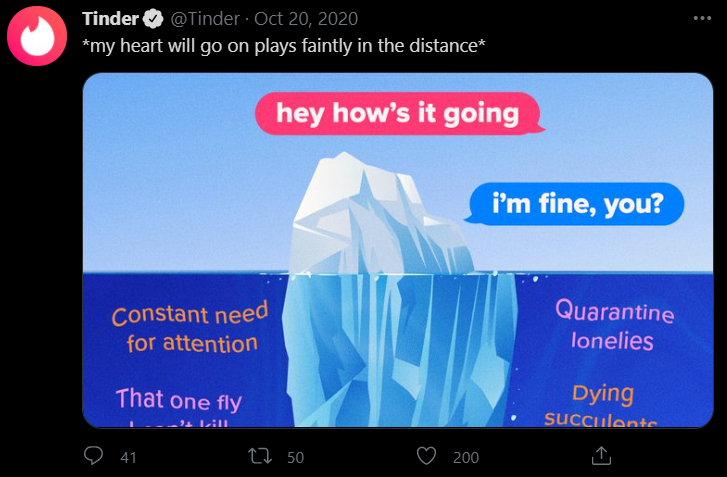
[Source]
That’s one intelligent way of generating familiarity!
Wouldn’t you agree?
What Is Repeated, Is Retained
Marketing is about saying one thing in a thousand different ways to cut through the noise created by your competitors.
To ensure your prospects sense the signal, you need to repeat your valuable message via creative methods online or offline.
Irrespective of the platforms you choose to market and advertise your brand on, maintain 100% cohesion amongst marketing materials.
There shouldn’t be any compromise when it comes to binding every platform together, so that a customer gets the same products via the same experience, regardless of buyer location.
Think of Starbucks…
You don’t think twice before visiting a store of theirs at a location you’ve never been to.
Why? Because you know and trust them to provide you with the same experience that you’d get anywhere in the world.
They make sure that they act to realize their mission:

[Source]
They strive to relentlessly stick to their above-mentioned goal.
Be Agnostic Of Platforms
Social media platforms, especially, are nothing but mediums to communicate.
Your message MUST be contextual to the platform, but it MUSTN’T modify your message.
When you think of Gary Vaynerchuk, an entrepreneur, and personal brand, you instantly think of a man:
- full of energy who owns multiple million-dollar businesses
- Who publishes content on a daily and motivates others to do the same
- Urges people to not feel sorry for themselves and make their lives better by taking action
No matter which platform you follow him on, whether it’s LinkedIn or Facebook or Instagram, you know what you’re gonna see.
That’s the power of brand continuity!
He uploaded a free resource:
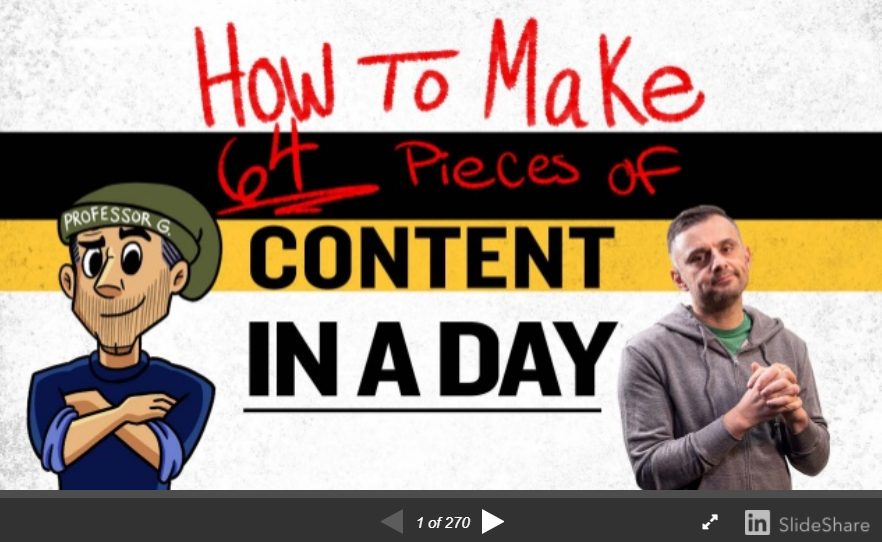
[Source]
I urge you to read through the whole document, as it details how you can create 64 pieces of content from just 1, yes 1 main content piece.
That’s a phenomenal resource to understand how to communicate so that you maintain brand continuity.
It works for both, personal brands and companies.
Stay Ready, So You Don’t Have To Get Ready
If you maintain brand continuity, you’d fear no new social media platform popping up and you having to build a new marketing strategy from scratch.
If you choose to be on the said new platform, your followers would flock there because they would get to see your personality in a different light.
It’d act as a new marketing channel while providing you with a new mode to express yourself.
A fine example of the power of brand continuity is Clubhouse:
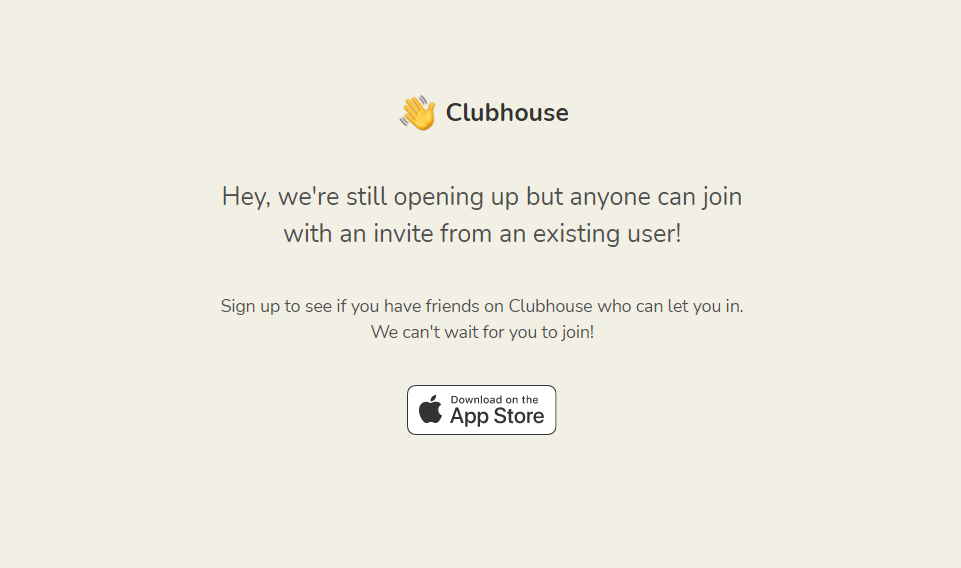
[Source]
It’s a new invite-only social audio platform, available only on iOS as of now.
Bigwigs like Elon Musk, Mark Zuckerberg, etc. have participated in its rooms.
Entrepreneurs, especially from Twitter, have flocked to the app.
The only reason? It’s easier to build a following when an app is in its nascent stages.
The people who choose to listen to these speakers completely know WHO they are listening to.
The speakers’ brand is continuous on Twitter and Insta, so they know what to expect on Clubhouse.
Do you see how Clubhouse leveraged the brand continuity of its users to build a brand for itself?!
Shun Trends and Stay In Your Lane
We love to follow specialists because they have an expert opinion on something that’s their niche.
Anyone who has something to say about everything isn’t taken seriously by anyone. Right?
Trends, by definition, are chained to timed-relevance.
It’s important to engage on social media only on the topics that vibe with your core message.
Publishing an opinion on an event just because it’s trendy to talk about it will shake your audience’s confidence in you as a brand, as they would no longer know what you really stand for.
Make sure your words have weight!
Make User Experience Continuous
The idea of responsive websites was to provide a similar experience on the web and mobile.
The customer experience must be the same whether your brand is accessed via a website or a mobile app.
Having design congruence displays that you care about customer experience and helps prospects trust you as a brand.
Also, if your products are prone to counterfeiting, it helps customers distinguish your company from the alleged copycats.
Tesla is a great example:
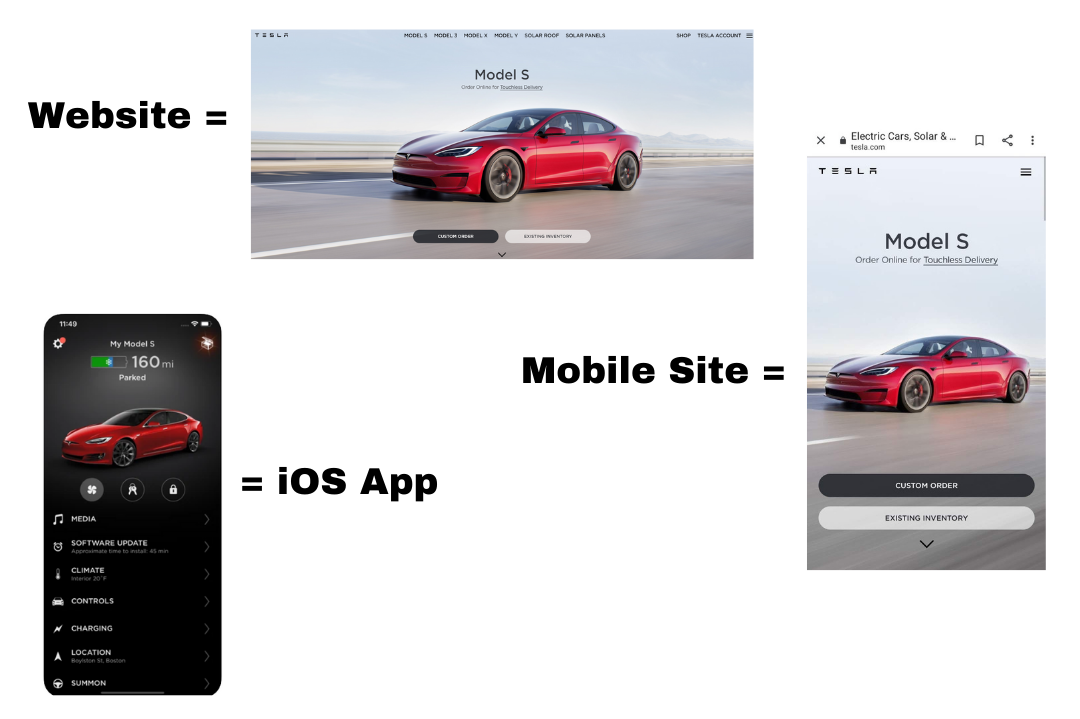
If you use any third-party app to sell your products, like Shopify, you should make sure that product pages can be rendered across all platforms.
Put some special attention to the product images, as Shopify doesn’t scale them to device size automatically.
If you are using any of the thousands of third-party apps from the Shopify App Store, make sure that these extensions render correctly across all the different device form factors.
Yes, that’s tough to imagine in 2021, but it’s reality!
You’ve to individually upload product images for device sizes that you know your traffic comes from.
Test and Improve
What gets measured, gets accomplished!
Dump in your efforts to market and advertise your brand, but it’s of paramount importance that you track the progress of your campaigns.
That will help you to objectively measure what’s working in your strategy toolkit and what needs some tweaking to help establish your brand and generate sales consistently.
And yes, you’ll have to let go of any strategy that doesn’t work in your favor, no matter how much time and effort you put into executing it.
Influencer and Affiliate Guidelines
Imagine that you have a baby…
Would you hand over your child to anyone without giving them specifics about how to take care of your child the best?
A big NO, right?
Influencers and affiliates are like those babysitters.
They help you spread brand awareness and generate sales at scale.
Of course, you want to make sure that they write and speak YOUR brand message instead of their opinion.
If you let them market and advertise however they wish to, your brand will get hurt.
Creating strict guidelines for influencers and affiliates helps them adhere to rules while promoting your product.
Also, it provides you with a template to follow while dealing with these peeps and completely eliminates the process of creating a content strategy customized to every influencer/affiliate.
Take a look at Daniel Wellington’s influencer marketing campaign:

There is an observable pattern in the way that influencers have posed. Do you see it?
That constitutes to be a kind of influence guideline.
Brand Continuity doesn’t happen by accident. It’s a careful and methodical approach to create a perception in the market.
Whether you choose to send an email, message via LinkedIn or Instagram, or advertise, your team must breathe in your message, so that no matter where and how a customer chooses to get in touch with your brand, they get a seamless experience.
If you’re looking to invest in your brand presence, let’s chat!
